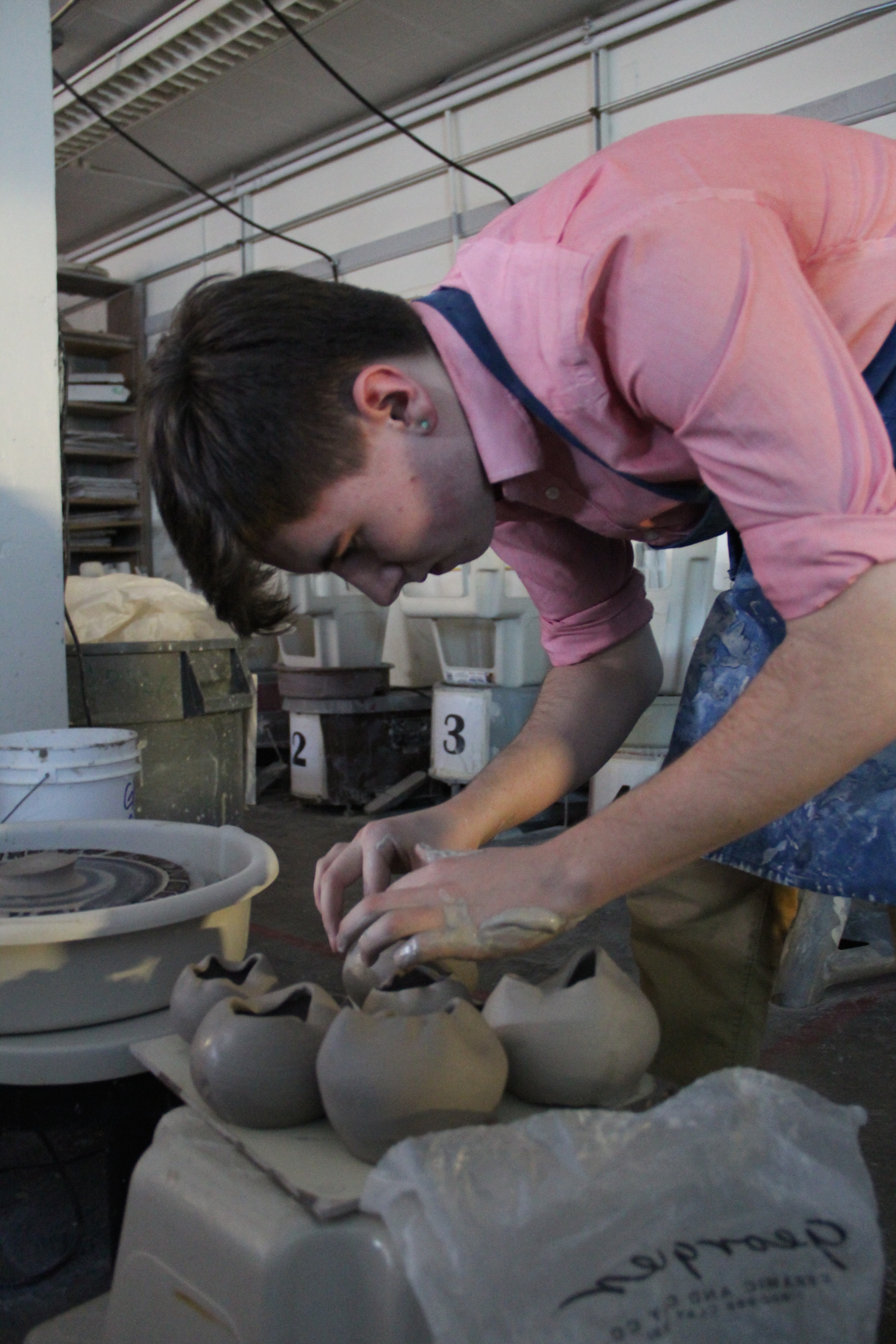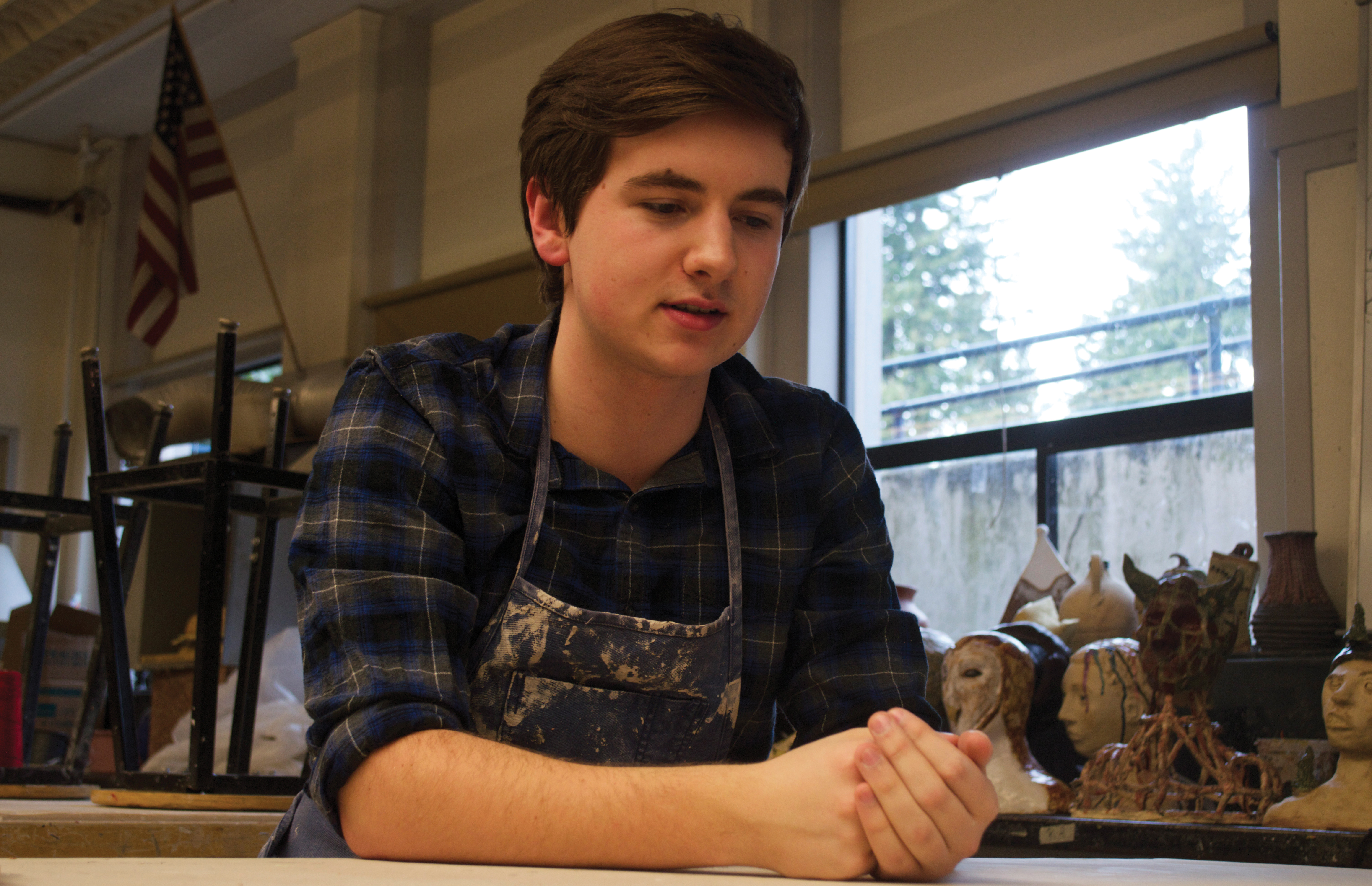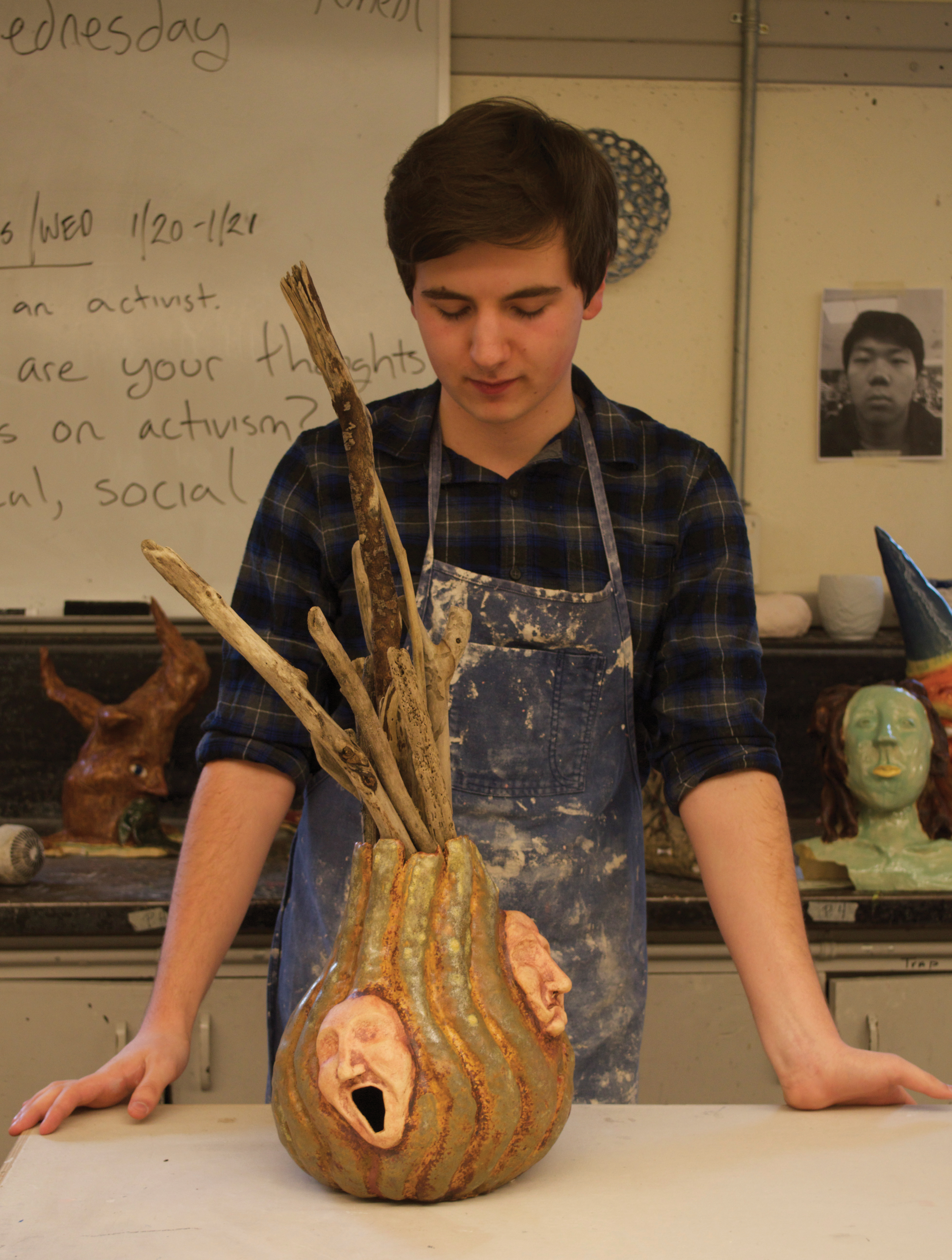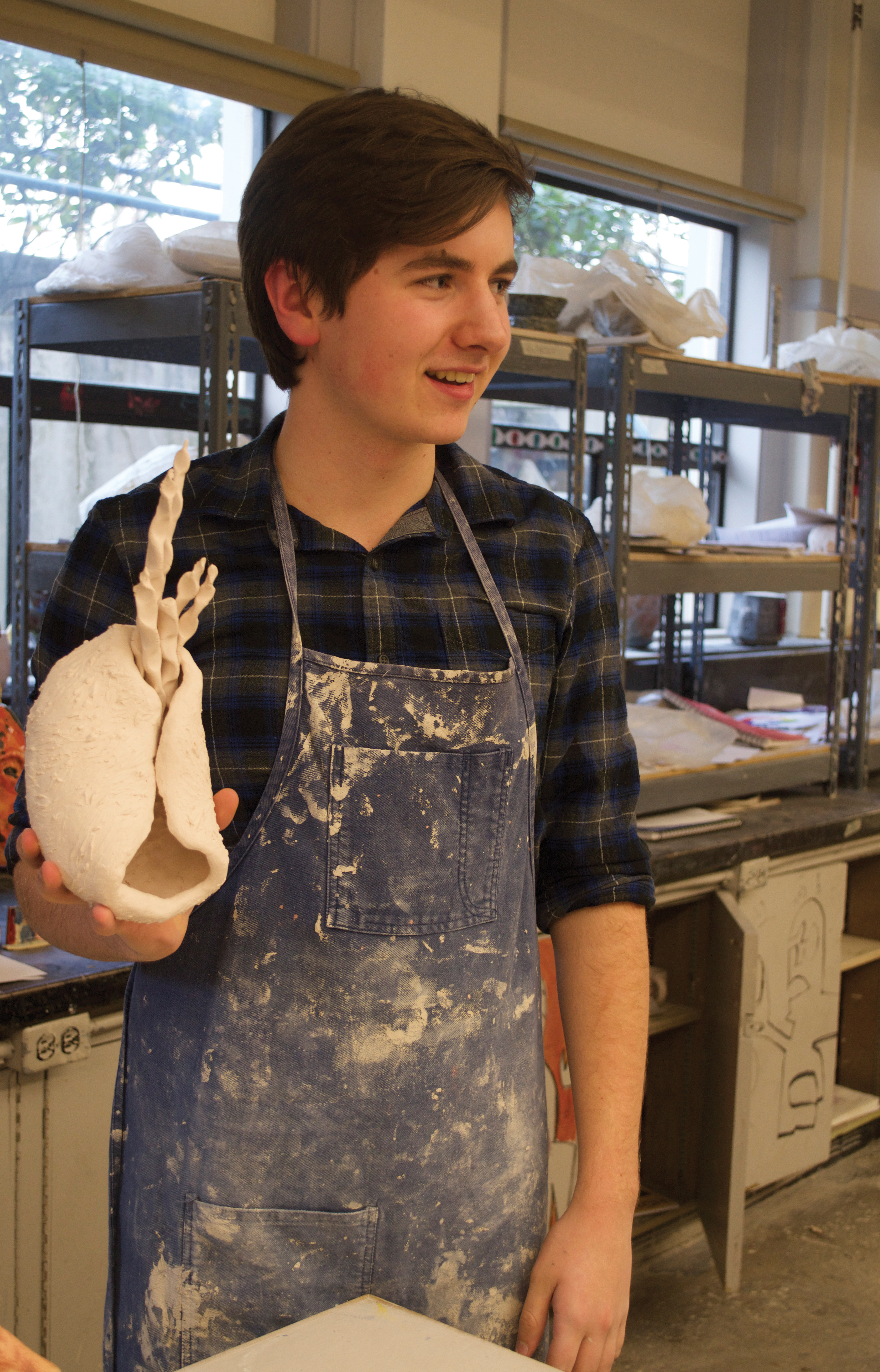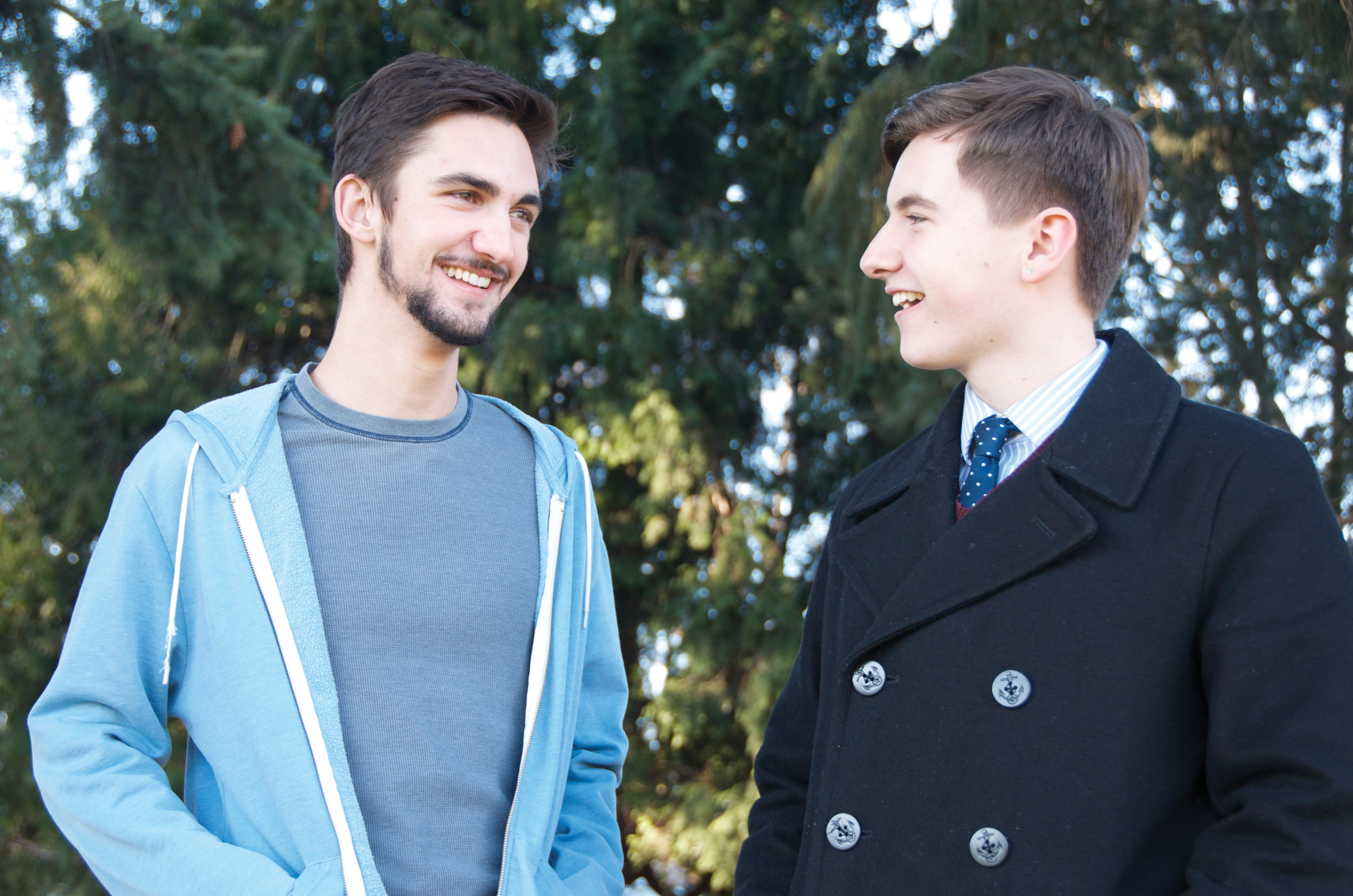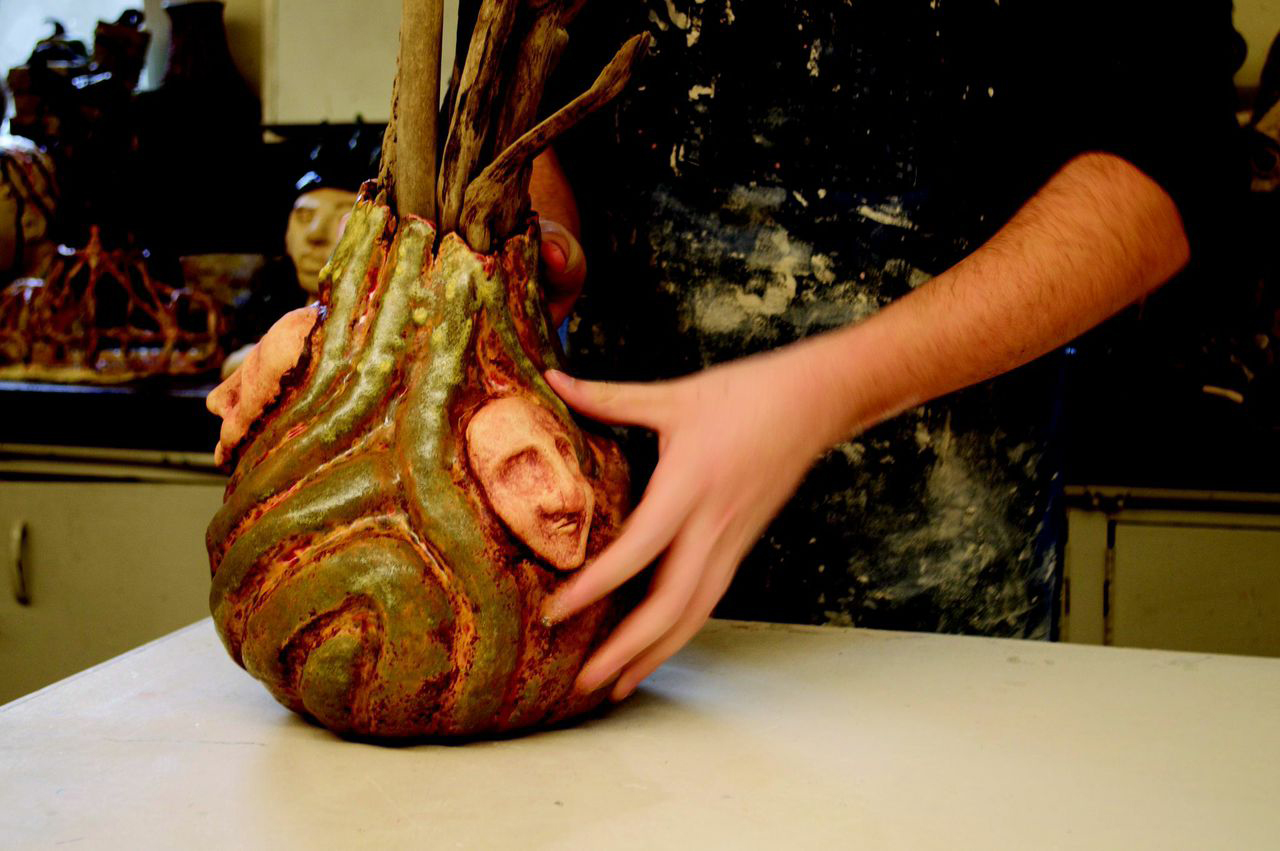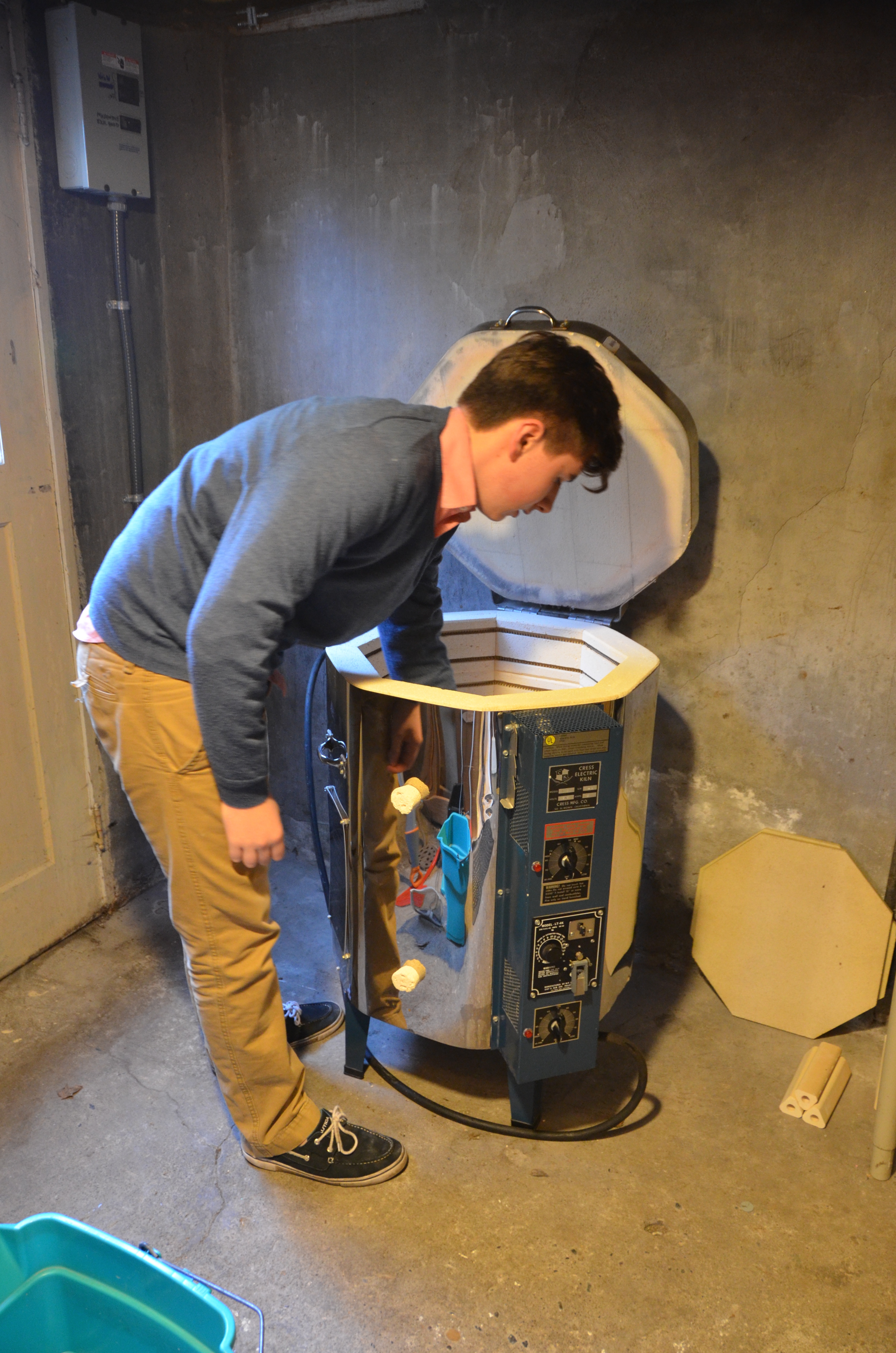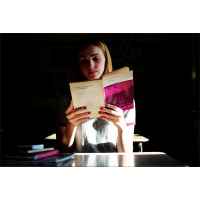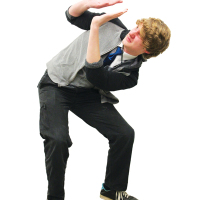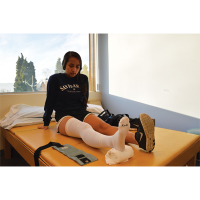With a sponge in hand and sleeves rolled up, Grant High School senior Grant Stone paints the inside of his gourd-shaped vase and stands back with a critical eye to make sure it’s fully covered.
A handful of oblong-length sticks about an inch in diameter are arranged inside the vase, which is patterned with thick ridges and three sculpted faces evoking surprise and hurt. The tip of the vase appears cracked, but the effect is intentional: a natural look.
“It just makes me feel like I’ve done something with my time,” he says. “Actually having a physical, tangible object you can hold, that can kind of stand for itself and be its own thing…I hope to do it throughout my life.”
Despite his easy, welcoming laugh and relaxed posture, Stone, 17, has not always enjoyed this subtle confidence. Three years ago, he was confused with his sexual identity and struggled with the pressure to fit in. Things hit an all-time low his freshman year and he wasn’t his normal, vibrant self that his family and friends knew. That summer, he came out as gay.
“I think it was hard for Grant because you are entering new territory,” says his dad, Larry Stone. “We want all of our kids to be who they are.”
For Stone and many teens like him, being openly gay in high school can present its challenges. While gay marriage is legal now in more than 30 states and the nation appears to be shifting its views on LGBT issues, high school is a tricky area.
Students are looking to fit in, find friends and figure out how to feel “normal.” Being gay in today’s society can hinder that feeling, experts say. According to surveys by the Human Rights Campaign, 47 percent of LGBT teenagers say “they do not fit in their community” compared to 16 percent of heterosexual teens who feel this way.”
In many cases, students wait until after high school to come out because they can start over.
Stone says he didn’t need to wait that long to feel comfortable with himself.
“I’ve learned that you don’t have to be entirely average to be normal or accepted,” he says. “The general feeling has been acceptance and not really caring. Like, ‘Oh, sweet, that’s you, that’s whatever…it’s not a big deal.’” -Grant Stone
Stone is defined by much more than his sexuality, though. He is a talented artist, a self-proclaimed science nerd and he loves to be in the water and among nature. He’s driven by curiosity and motivation to excel at the things he loves.
Stone grew up in Portland with an early love for art and the water. His parents remember taking him to the Oregon Coast to visit his grandfather. “Wherever there’s Grant and water, it’s only a matter of time,” his mom, Linda Stone, recalls Stone’s grandfather saying.
As a toddler, Grant Stone would run into the cold bay waters with a down coat on and come out soaked and laughing. When he was 6, he joined the summer swim team at Grant Pool and hasn’t stopped since.
At the Oregon Coast, Stone was exposed to ceramics. His grandfather, an art professor, worked with him in his studio, teaching him the basics of clay. The medium is in Stone’s genes. Several years ago, he found out his ancestors in Poland were known as “the people that work with clay and stone.”
Stone went to Laurelhurst Elementary and Middle School and continued his art. There, he met McKenna Spathas, one of his closest friends today. “I feel like I can talk to him about anything,” she says. “He won’t judge at all.”
In sixth grade, Stone started the Environmental Club at Laurelhurst. He spearheaded starting a school garden, organizing a silverware drive and getting rid of Styrofoam lunch trays. He noticed that out of the 700 kids at his school, at least half were getting hot lunch and throwing away lunch trays.
“They came to the PTA and, as kids, said they wanted it to stop,” Linda Stone recalls. The PTA obliged.
Through various fundraisers, the students raised enough money to buy plastic lunch trays for the entire school. Stone’s passion for environmental science grew, as well as his interest in other related fields, and his younger brother knows that the best way to annoy him is to steal the latest issue of Popular Science.
Like many boys, Stone dated girls in middle school. He was beginning to contemplate his sexuality and made efforts to display an aura of masculinity. He remembers his group of friends playing basketball at recess and even though he didn’t like the game, he played with them to avoid being different.
“Back then, I was a lot more worried about what others thought of me,” he says. “I wanted to be one with the sheep. I wanted to conform.”
In seventh grade, Stone tested the waters by telling Spathas and his parents that he thought he might be bisexual. His parents listened to him and supported him but he didn’t bring it up again.
Going into his freshman year of high school, Stone was influenced by a heavy sense of peer pressure. “I wanted to make a bunch of friends and I wanted to fit in,” he says. “I really desperately wanted to fit in.”
Swimming on the varsity swim team and continuing to date girls, Stone seemed to be fitting in just fine. But the image he was presenting to people didn’t match how he felt on the inside. His mom noticed Stone wasn’t acting like himself and worried about what was bothering him.
“It’s hard to see your child being so shut down. We would come and talk to you in your room and try to find out how you were doing but I also felt like it was necessary to give you some space,” says Stone’s to him in a recent interview.
Stone was confused – afraid of what people would think of him and of how things would change. “I think he wasn’t happy with himself or happy how he was,” says Spathas.
He felt alone and at the end of the year began struggling with depression. “I was really scared to come out because I wasn’t worried about losing my friends,” he says now. “I was worried about losing my family. I shouldn’t have been. If you feel like others might not love you, it’s really hard to love yourself.”
“It was irrational, but it was just really scary testing the waters. I’m not going to lie – it was one of the hardest things I’ve had to do. Nobody in our family had come out and I didn’t really know what the response was going to be.”
He talked with Spathas about his confusion over his identity and she was there to listen. Late one night, Stone reached his lowest point and called her. After talking for hours, he began to realize where he stood.
“There was this almost subconscious notion that I always knew,” he says. “And there was the other…acknowledging that that was a part of me. As soon as I did that, it was within a week. I remember being like, ‘I’m gay and I just need to tell people. I just need to do it.’ Saying that to myself made it just more real.”
That summer, he told Spathas he was gay and word spread to their friends. A week later, he told his parents.
“When Grant came out to me, I just told him, ‘I love you.’ It changes nothing,” says his dad.
Despite a deeper awareness of himself and the positive experience of coming out, it took time for Stone to come to terms with his identity. He started seeing a counselor and things gradually got better. He began to realize that his friends and family loved and accepted him for who he was. More importantly to his happiness, though, was that he had started to accept himself.
Sophomore year, he began ceramics at Grant and used it as an outlet to express himself. He met Jamin London-Tinsel, the Grant ceramics teacher, and they formed a connection over their passion for art.
“I think him and I have a lot in common,” she says. “When you see it really happen in a student, when you see that light turn on and that excitement and energy…it makes this job so worth it. Grant is one of those kids that makes this job worth it.”
While Stone was comfortable enough to come out in high school and find acceptance, it’s not always the case among many students. London-Tinsel says high school can be a tough place.
“I do think that it’s really hard to come out in high school, just because there are 1,500 students that are all dealing with their own insecurities and need for acceptance,” she says. “After high school, you have the opportunity to choose your community and find your people that you’re comfortable around.”
Stone acknowledges that in college “you get to redesign yourself. You’re going into a college where you don’t know anybody and nobody knows you. People can start over in a sense. You start being your own person.”
For now, he’s living his life like any other high school student. He continues to swim for the school. His art class takes up a lot of his time. And he’s taking a challenging physics course.
His personal life is at a high point, as well. Last fall, he started dating senior Cameron Hill and they’ve been together for more than two-and-a-half months.
The two have had several classes together during their years at Grant and have been involved in similar extra-curricular activities.
Hill says he remembers admiring Stone’s courage to come out. In his own case, Hill says “I pretty much had all positive responses. The first time is probably the hardest, but once you have a group of people who support you it’s easy to go with it.”
Hill often visits Stone in the ceramics room and London-Tinsel says: “I see them hugging and I see them being close with one another and I’m just like, ‘Yes, that is so important.’ I think it’s great that he feels comfortable and he should.”
Although Portland and the Grant community are very accepting, Stone doesn’t feel entirely comfortable being with his boyfriend in public. He notices people being overly friendly to them when they are together on dates and though it’s subtle, he feels the effort that is being made.
“They’re like, ‘I’m excited because you’re on a date with a boy,’” he says. “It’s nice because it’s totally supportive but I feel different because of it. It’s been frustrating but not to the extent that I can complain about it that much because it’s support and happiness.”
He’s also observed that people like to talk about his sexuality more than he does and says flatly: “I wouldn’t bring up somebody’s sexuality if they were straight.”
His sexuality is one small part of who he is. “I like to just be my own person and do my own thing and not let my sexuality define me because I don’t want others to define me by my sexuality,” he says. “I’d rather have them define me by my character and who I am.”
Compared to when she was in high school, London-Tinsel says that things have changed considerably. “Gay marriage was illegal and we didn’t have a president who was supportive of gay marriage,” she says. “Marriage equality and gay rights have become something that are talked about so much and there are so many more students that are out and are comfortable with their identity.”
“I’d like to think that we are an accepting community of all students. But I know that there’s still so much more work that needs to happen.”
Several weeks ago, Stone and his parents installed a kiln in the basement of their home. He’s just started to use it, experimenting with smaller projects and late Christmas presents for his family. He’s also building a ceramics studio in the corner of his garage.
With a window that looks out onto the backyard, a large table for molding the clay and a space heater, it would be any artist’s dream. It’s still a work in progress, and he plans on painting the walls and adding a curtain to hide the tool storage.
Stone’s future is wide open. “I’m just going to start studying my interests and who knows?” he says. “Maybe if history starts being super interesting to me I’ll do that. It’s a pretty good guess that I will be doing science and art a few years from now.” ◊

